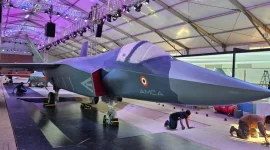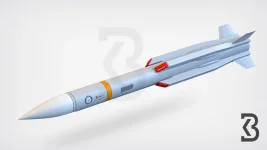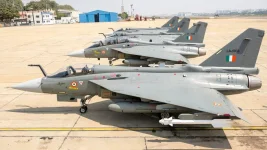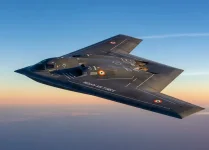- Views: 2K
- Replies: 7

In a significant move, the Indian Air Force (IAF) has deployed its Tejas Mk1 fighter jets to frontline airbases along the western border with Pakistan. This strategic deployment comes as the IAF begins phasing out its aging MiG-21 fleet, with a complete withdrawal expected by 2026.
The Tejas, indigenously developed and equipped with modern technology, is stepping up to fill the gap and enhance the IAF's air defen e capabilities in the region.
The IAF has recently relocated its Final Operational Clearance (FOC) Tejas Mk1 fighters from their southern bases to the western sector, with a particular focus on supporting operations at the Jamnagar Air Force Station.
This station is becoming a hub for integrating new and existing assets as the MiG-21s, renowned for their long service but now nearing the end of their operational life, are gradually withdrawn from service.
The Tejas Mk1 FOC variants deployed to the western border are armed with advanced air-to-air missiles like the Rafael Derby and the Vympel R-77 (AA-12 Adder), ensuring they are combat-ready. This armament significantly enhances their operational effectiveness compared to the MiG-21s they are replacing.
Looking ahead, the Nal Airbase in Rajasthan is set to become the first base to host the upgraded Tejas Mk1A. This variant boasts even more advanced features, including an Active Electronically Scanned Array (AESA) radar, and is slated for official induction into the IAF by March 2025.
Hindustan Aeronautics Limited (HAL) has committed to delivering at least four of these aircraft initially, establishing a permanent Tejas Mk1A presence in the region facing Pakistan.
The deployment of Tejas fighters is strategically timed to coincide with the phasing out of the MiG-21s, ensuring seamless air defence coverage along the western border. The Tejas will take over many of the operational roles previously held by the MiG-21s, particularly in low to medium threat environments where their agility and modern systems are most effective.
This move not only strengthens the IAF's combat readiness but also serves as a deterrent. The Tejas' capabilities in terms of range, maneuverability, and advanced weaponry make it a formidable asset in maintaining air superiority.
With the Tejas Mk1A on the horizon, the IAF is clearly focused on future conflicts with an emphasis on technology and indigenous development. This reduces its dependency on foreign aircraft and strengthens national security through self-reliance. The Tejas program represents a significant step forward in India's journey towards becoming a major aerospace power.




